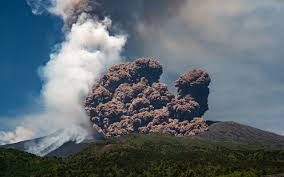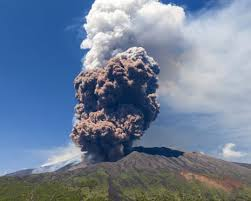Mount Etna Erupts Dramatically in June 2025: Lava Fountains and Ash Plumes Shake Sicily
On June 2, 2025, Mount Etna, Europe's most active volcano located on the Italian island of Sicily, erupted spectacularly, captivating observers and prompting safety measures. The eruption featured powerful lava fountains and massive ash plumes, marking one of the most significant volcanic events in recent months.
Mount Etna, Europe’s most active volcano, erupted spectacularly on Monday, sending plumes of hot ash and rivers of molten lava cascading down its slopes in a dramatic display of nature’s power.
The eruption was confirmed by Italy’s national volcano monitoring agency, which has been closely tracking the volcano’s activity on the island of Sicily.
According to initial reports, the eruption produced a significant pyroclastic flow a fast moving current of hot gas, ash, and volcanic rock-emanating from the central crater.


Eruption Details
The eruption began in the early hours of Monday, following increased seismic activity detected by Italy's National Institute of Geophysics and Volcanology (INGV). The southeast crater, known for its frequent activity, became the focal point as lava fountains soared into the sky, accompanied by continuous strombolian explosions. Ash plumes reached altitudes of up to 6,400 meters, leading the Volcanic Ash Advisory Centre in Toulouse to issue a "code red" alert for aviation due to the dense ash cloud.
Impact on Locals and Tourists
The suddenness of the eruption caused panic among tourists and locals. Videos circulating on social media showed visitors fleeing as ash and lava spewed from the crater. Despite the dramatic visuals, authorities reported no casualties. The eruption's intensity led to minor tremors felt in surrounding communities, but the main danger zone remained confined to the summit area, which had been closed to the public as a precaution.
Aviation and Transportation
While the eruption prompted a temporary "code red" alert for aviation, the Catania Airport remained operational, with no significant flight disruptions reported. The direction of the ash plume, carried by prevailing winds, helped prevent ash accumulation on runways, allowing flights to continue with caution.
Geological Significance
Mount Etna stands approximately 3,300 meters tall and is one of the world's most active stratovolcanoes. Its frequent eruptions have shaped the landscape and influenced local agriculture, thanks to the fertile volcanic soils. The June 2025 eruption is the 14th eruptive phase in recent months, highlighting the volcano's persistent activity.
Safety Measures and Monitoring
Italian authorities, including the Civil Protection Department, have maintained vigilant monitoring of Mount Etna. Advanced warning systems and restricted access to high-risk areas have been effective in ensuring public safety during eruptions. The INGV continues to analyze seismic data and volcanic activity to provide timely updates and alerts.
Conclusion
The June 2025 eruption of Mount Etna serves as a powerful reminder of nature's force and the importance of continuous monitoring and preparedness. While the eruption caused temporary disruptions and awe-inspiring scenes, effective safety protocols ensured minimal impact on human life. As Mount Etna continues its active phase, scientists and authorities remain alert to safeguard communities and study the volcano's behavior.